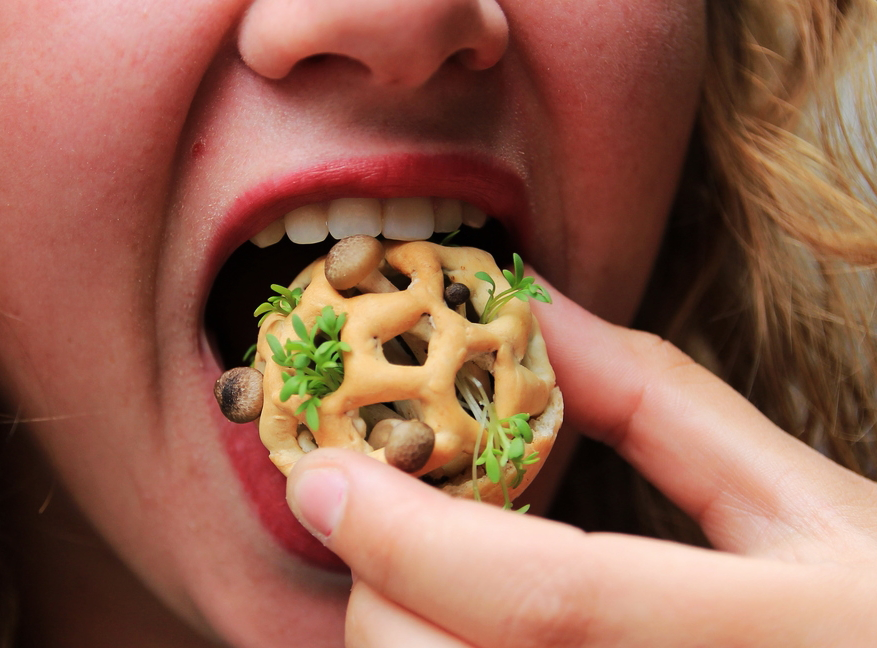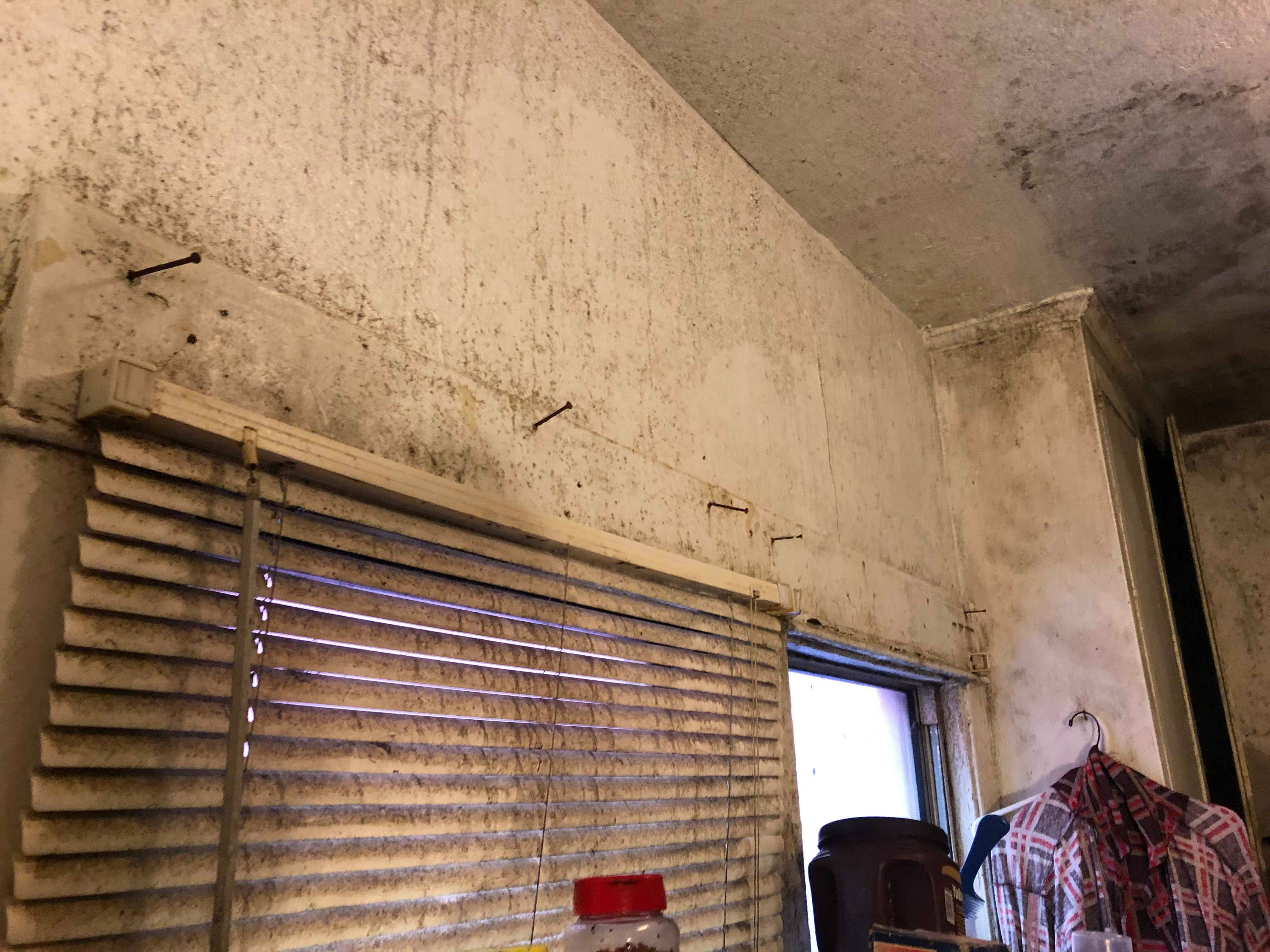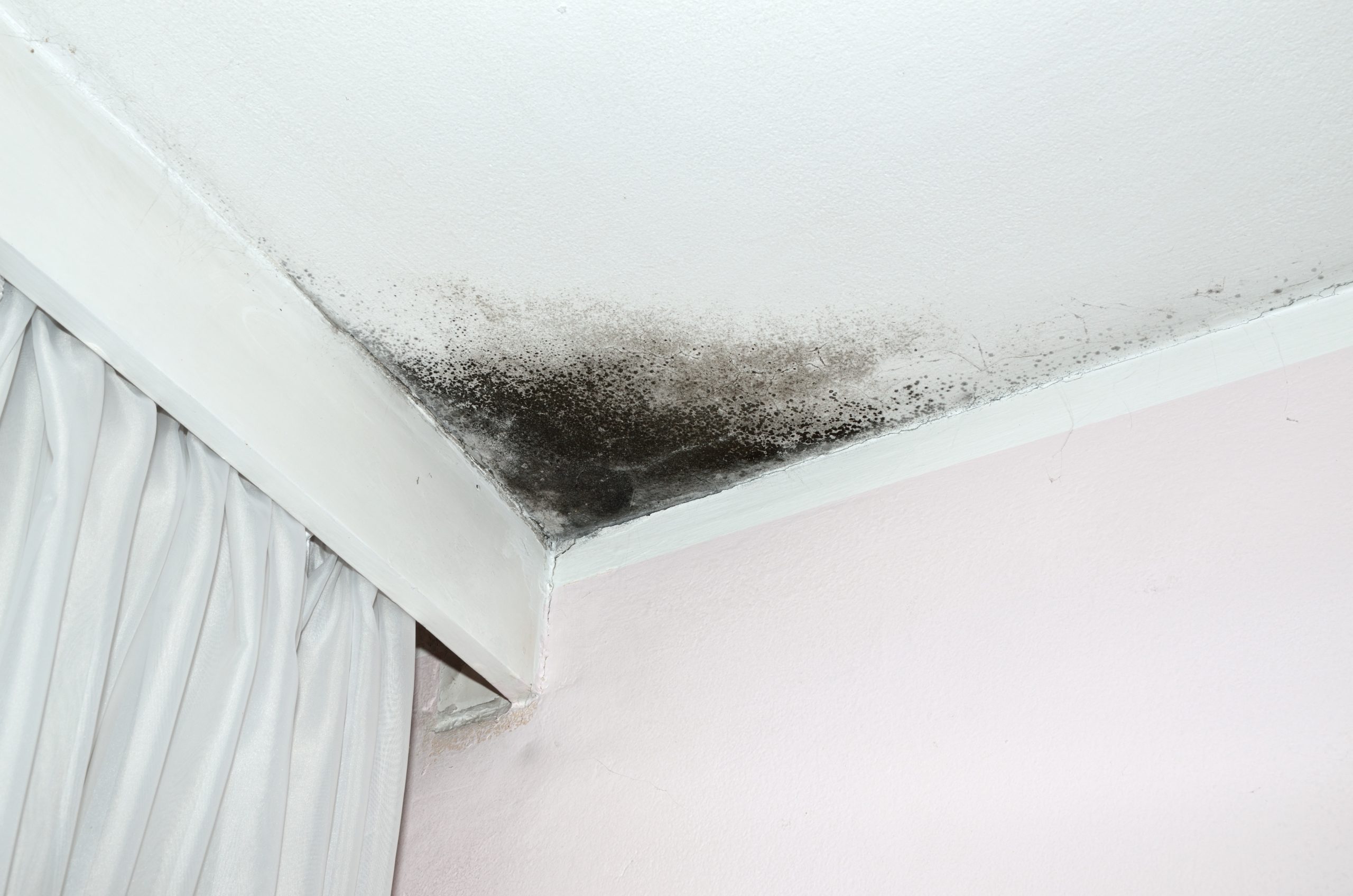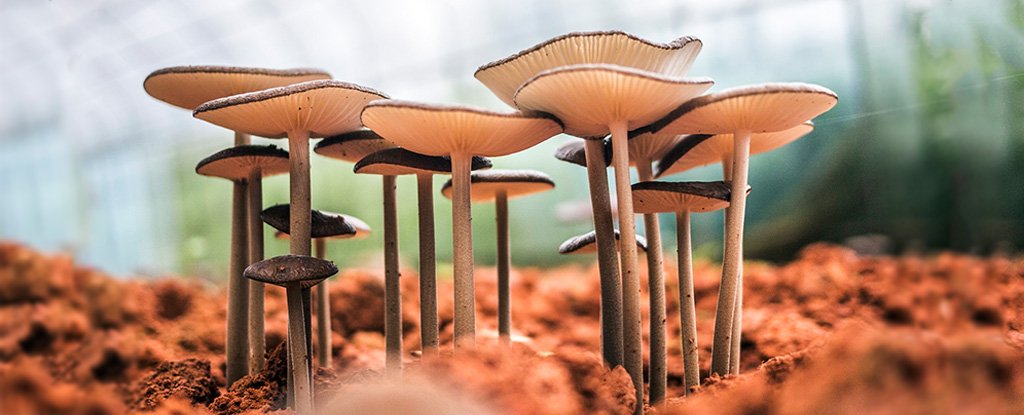Fungus growth on kitchen walls is a common problem that can not only be unsightly, but also a health hazard. If left untreated, it can spread and cause damage to your walls and potentially affect the air quality in your home. The good news is that there are effective ways to remove fungus from kitchen walls and prevent it from coming back. Start by identifying the type of fungus growing on your walls. This will help determine the best method for removal. Common types of fungus found in kitchens include black mold, mildew, and yeast. Once you have identified the type, you can begin the removal process. For smaller areas of fungus growth, you can use a mixture of equal parts water and white vinegar. Apply the mixture to the affected area and let it sit for 15-20 minutes before scrubbing with a brush or sponge. Rinse the area with water and dry thoroughly. If the fungus is more widespread or difficult to remove, consider using a commercial anti-fungal cleaner. Be sure to follow the instructions carefully and wear protective gear, such as gloves and a mask, when using these products. Once the fungus has been removed, it is important to address the underlying cause to prevent it from coming back.1. How to Remove Fungus from Kitchen Walls
Fungus needs moisture to grow, so it is important to identify and address any sources of excess moisture in your kitchen. Common causes of fungus growth on kitchen walls include leaky pipes, poor ventilation, and high humidity levels. Inspect your kitchen for any leaks and have them repaired immediately. Be sure to regularly clean and maintain your kitchen appliances, such as your dishwasher and refrigerator, to prevent any moisture buildup. Improving ventilation in your kitchen can also help prevent fungus growth. Open windows or use exhaust fans while cooking and consider installing a dehumidifier if your kitchen consistently has high humidity levels. It is also important to regularly clean your kitchen walls and address any spills or moisture immediately to prevent fungus growth.2. Causes of Fungus Growth on Kitchen Walls
Prevention is key when it comes to fungus growth on kitchen walls. Along with addressing any underlying causes, there are other steps you can take to prevent fungus from growing in your kitchen. Regularly clean and disinfect your kitchen to remove any potential food sources for fungus. This includes wiping down counters, cabinets, and appliances with a mixture of water and white vinegar. Keep an eye out for any signs of leaks or moisture buildup and address them promptly. Consider using a moisture-absorbing product, such as baking soda, in areas prone to excess moisture. Lastly, make sure your kitchen is well-ventilated to prevent any moisture from getting trapped and creating an ideal environment for fungus to grow.3. Preventing Fungus Growth in the Kitchen
As mentioned before, there are several types of fungus that can grow on kitchen walls. The most common types include black mold, mildew, and yeast. Black mold, also known as Stachybotrys chartarum, is a toxic type of fungus that can cause respiratory issues, skin irritation, and other health problems. It is typically black or dark green in color and has a musty odor. Mildew is a type of fungus that appears as white or gray spots on surfaces. It is not as harmful as black mold, but can still cause respiratory issues and aggravate allergies. Yeast is a type of fungus that is commonly found in kitchens and can cause food spoilage. It appears as a white or pinkish film on surfaces and can be harmful if ingested.4. Types of Fungus That Can Grow on Kitchen Walls
If you prefer to tackle fungus removal yourself, there are a few DIY methods you can try. As mentioned before, a mixture of equal parts water and white vinegar can be effective for smaller areas of fungus growth. You can also use a mixture of water and bleach, but be sure to use caution and wear protective gear when handling bleach. Apply the mixture to the affected area and let it sit for 15-20 minutes before scrubbing and rinsing. Baking soda is another natural method for removing fungus. Make a paste with water and baking soda and apply it to the affected area. Let it sit for a few minutes before scrubbing and rinsing.5. DIY Fungus Removal Methods for Kitchen Walls
If the fungus growth on your kitchen walls is extensive or difficult to remove, it may be best to seek professional help. A professional fungus removal service will have the proper equipment and expertise to effectively remove the fungus and prevent it from coming back. They may also be able to identify any underlying causes and provide solutions to prevent future fungus growth in your kitchen.6. Professional Fungus Removal Services for Kitchen Walls
Black mold is a serious issue and should be treated immediately. If you suspect you have black mold in your kitchen, it is important to identify it and take the necessary steps to remove it. Black mold is typically black or dark green in color and has a musty odor. It thrives in areas with excess moisture and can be harmful if ingested or inhaled. If you have black mold in your kitchen, it is best to seek professional help for removal. Once the mold has been removed, it is important to address any underlying causes, such as leaks or poor ventilation, to prevent it from coming back.7. Identifying and Treating Black Mold on Kitchen Walls
After removing fungus from your kitchen walls, it is important to thoroughly clean and disinfect the area to prevent any remaining spores from growing. Use a mixture of water and white vinegar to wipe down the walls and then follow up with a disinfectant cleaner. Be sure to let the walls dry completely before restoring any items to the area. If the fungus growth was extensive, you may also want to consider repainting the affected area to ensure all traces of the fungus are removed.8. How to Clean and Disinfect Kitchen Walls After Fungus Growth
It is important to catch fungus growth on kitchen walls early to prevent it from spreading and causing damage. Some common signs of fungus growth include discoloration, musty odors, and visible spots or patches on the walls. If you notice any of these signs, it is best to address them immediately to prevent the problem from getting worse.9. Common Signs of Fungus Growth on Kitchen Walls
Fungus growth on kitchen walls can cause damage to the walls, such as discoloration and structural issues. Depending on the extent of the damage, repairs may be necessary. If the damage is minor, you may be able to repair it yourself with some sanding and repainting. However, if the damage is more extensive, it is best to seek professional help to properly repair and restore your kitchen walls. In conclusion, fungus growth on kitchen walls is a common problem that can be effectively treated and prevented. By following these tips and regularly maintaining your kitchen, you can keep your walls fungus-free and ensure a healthy living environment for you and your family.10. How to Repair Damage Caused by Fungus on Kitchen Walls
Fungus: The Unwanted Houseguest

The Dangers of Fungal Growth in Your Home
 Fungal growth is a common occurrence in many homes, especially in areas with high levels of moisture and humidity. While it may seem harmless at first, the presence of fungus on your kitchen walls can actually be a cause for concern. Not only is it unsightly and unpleasant to look at, but it also poses potential health risks to you and your family.
Fungus
is a type of microorganism that thrives in damp and warm environments, making your kitchen an ideal breeding ground. It can often be found growing on walls, ceilings, and even on food. This
unwanted houseguest
can cause a range of issues, from minor irritations to serious health problems.
One of the main concerns with fungal growth in your home is the potential for
allergic reactions
. As the fungus releases spores into the air, they can easily be inhaled and cause respiratory issues such as coughing, sneezing, and wheezing. For those with pre-existing respiratory conditions, such as asthma, the presence of fungus can exacerbate symptoms and make it difficult to breathe.
In addition to respiratory problems, fungal growth can also lead to
skin irritation
. Contact with the fungus can cause rashes, itching, and even infections. This is especially concerning for young children and those with weakened immune systems, as they are more susceptible to these effects.
Furthermore, certain types of fungus can release
toxic substances
known as mycotoxins, which can have serious health consequences. Prolonged exposure to these toxins can lead to neurological issues, immune system problems, and even cancer. It is important to address fungal growth in your home as soon as possible to prevent these risks.
Aside from the potential health hazards, fungal growth can also
damage your home
in the long run. As it spreads and grows, it can weaken the structure of your walls and ceilings, leading to costly repairs. It can also cause unsightly stains and discoloration, making your kitchen less aesthetically appealing.
In conclusion, while fungal growth on your kitchen walls may seem like a minor inconvenience, it is important to take it seriously. Not only can it cause health problems for you and your family, but it can also damage your home and require expensive repairs. If you notice any signs of fungal growth in your home, it is best to address it immediately to prevent further issues.
Fungal growth is a common occurrence in many homes, especially in areas with high levels of moisture and humidity. While it may seem harmless at first, the presence of fungus on your kitchen walls can actually be a cause for concern. Not only is it unsightly and unpleasant to look at, but it also poses potential health risks to you and your family.
Fungus
is a type of microorganism that thrives in damp and warm environments, making your kitchen an ideal breeding ground. It can often be found growing on walls, ceilings, and even on food. This
unwanted houseguest
can cause a range of issues, from minor irritations to serious health problems.
One of the main concerns with fungal growth in your home is the potential for
allergic reactions
. As the fungus releases spores into the air, they can easily be inhaled and cause respiratory issues such as coughing, sneezing, and wheezing. For those with pre-existing respiratory conditions, such as asthma, the presence of fungus can exacerbate symptoms and make it difficult to breathe.
In addition to respiratory problems, fungal growth can also lead to
skin irritation
. Contact with the fungus can cause rashes, itching, and even infections. This is especially concerning for young children and those with weakened immune systems, as they are more susceptible to these effects.
Furthermore, certain types of fungus can release
toxic substances
known as mycotoxins, which can have serious health consequences. Prolonged exposure to these toxins can lead to neurological issues, immune system problems, and even cancer. It is important to address fungal growth in your home as soon as possible to prevent these risks.
Aside from the potential health hazards, fungal growth can also
damage your home
in the long run. As it spreads and grows, it can weaken the structure of your walls and ceilings, leading to costly repairs. It can also cause unsightly stains and discoloration, making your kitchen less aesthetically appealing.
In conclusion, while fungal growth on your kitchen walls may seem like a minor inconvenience, it is important to take it seriously. Not only can it cause health problems for you and your family, but it can also damage your home and require expensive repairs. If you notice any signs of fungal growth in your home, it is best to address it immediately to prevent further issues.






























































:max_bytes(150000):strip_icc()/identifying-mold-vs-mildew-4799138-final-4266e4b3d84c4401a7c1d8b6835dcc97.png)




































